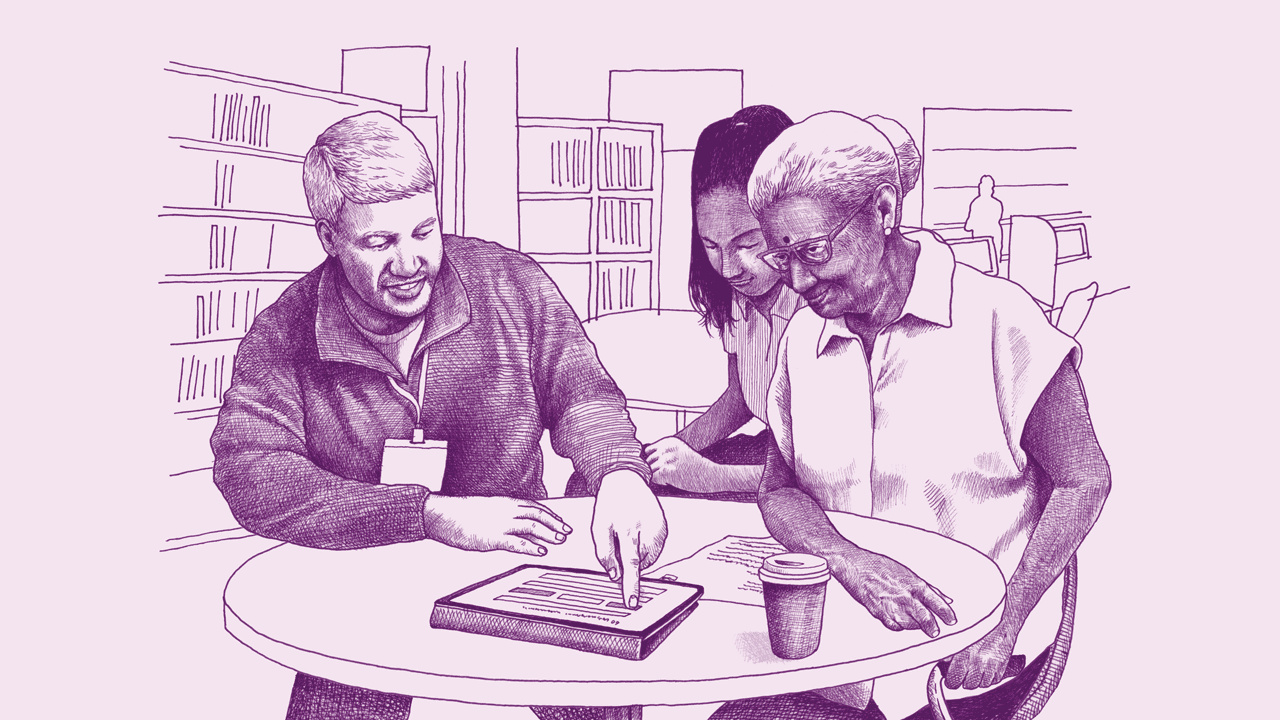AI Tools for Public Benefits | Nava (original) (raw)
Overview
With support from our partners and funding from the Bill & Melinda Gates Foundation, we are researching, prototyping, and piloting tools for staff such as caseworkers, call-center specialists, community health workers, and other community partners—who we call benefits navigators—to use when helping families identify and enroll in public-assistance programs.
Our goal is to support informed decisions while developing an understanding of how we can ethically use artificial intelligence (AI) to expand access to public benefits.

Use cases we're exploring
We’re experimenting with AI-powered tools focused on several use cases—all of which focus on empowering benefits navigators rather than replacing them.
Helping answer benefits navigators’ questions
When benefits navigators are on the phone with applicants, they often need to answer questions that require researching and interpreting complex program requirements. Providing accurate answers in real-time can be difficult.
An AI-powered assistive chatbot could help benefits navigators answer these questions faster and with less cognitive burden.
Our prototype chatbot uses a large language model (LLM) constrained by retrieval-augmented generation (RAG) to search policy manuals and existing plain-language guidance, retrieve information relevant to staff members’ questions, summarize the information in plain language, and provide source citations.
Verifying and analyzing documents
A major obstacle in applying for benefits is supplying all of the required supporting documentation. For benefits navigators, one challenge is sifting through applicants’ numerous documents to find information and verify that it meets requirements.
An AI-powered tool could help automate or speed up tasks such as identifying document types, extracting required data, and providing real-time document quality feedback. Addressing issues early, helps avoid unnecessary delays and denials; it also saves time for benefits navigators.
Summarizing call notes
After speaking with an applicant, benefits navigators must write out call summaries and next steps, which can be a burden in their heavy workload. They rely on their notes and memory, which can be unreliable, as they discuss lots of complex information during calls—so applicants may receive incomplete guidance and program administrators have more difficulty with tracking and reporting.
An AI-powered tool could quickly summarize call notes and next steps, freeing up time for benefits navigators and increasing the accuracy of call records.
Providing referrals to other services
People applying for benefits often require services from multiple programs. For example, if someone has just lost their job, a benefits navigator who specializes in SNAP (food assistance) may refer that person to another organization that can help with unemployment insurance. Benefits navigators check resource lists when providing referrals, but updating these lists is a manual process that takes time and risks missing valuable resources.
An AI-powered tool could help benefits navigators retrieve referrals more quickly and thoroughly.
Stakeholders
We’re extensively researching and collaborating with nonprofits, governments, and families to understand the needs of benefits navigators and program beneficiaries.
Phase 1: User research
Our research with benefits navigators and beneficiaries revealed promising use cases for AI-powered tools.
Phase 2: Early experimentation
We conducted a series of experiments to see if helpful solutions exist for our use cases and to gauge technical feasibility.
Phase 3: Prototyping
Our experiments helped us identify one particularly promising use case: building a chatbot to help answer benefits navigators’ questions in real time. We’re currently prototyping this tool and will be piloting it with a partner organization.
Our prototypes so far have been looking at ways to improve responses with direct-quote source citations, reference materials, and more.
Toolkits
Demo Days and Events
Announcements
Press
- The Human Centered Design Network: “Designing Tomorrow: Genevieve Gaudet for Nava”: Genevieve contrasts the allure of big tech in Silicon Valley against the meaningful work undertaken daily at Nava.
- Technical.ly: “This company is trying to lessen caseworkers’ workload through a new AI research project”: Nava partnered with Benefits Data Trust, the Gates Foundation and Google to explore generative and predictive artificial intelligence’s potential for public benefits navigation.
- Tech Policy Press: “Four Ways to Ensure Ethical Experimentation with AI in the Public Sector”: Following human-centered design principles can help avoid potential harms of AI systems.
Partner with us
Be part of our Nava Labs collaborative learning.
